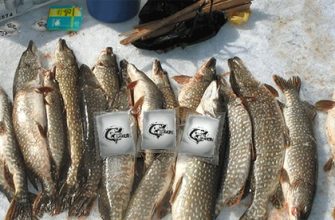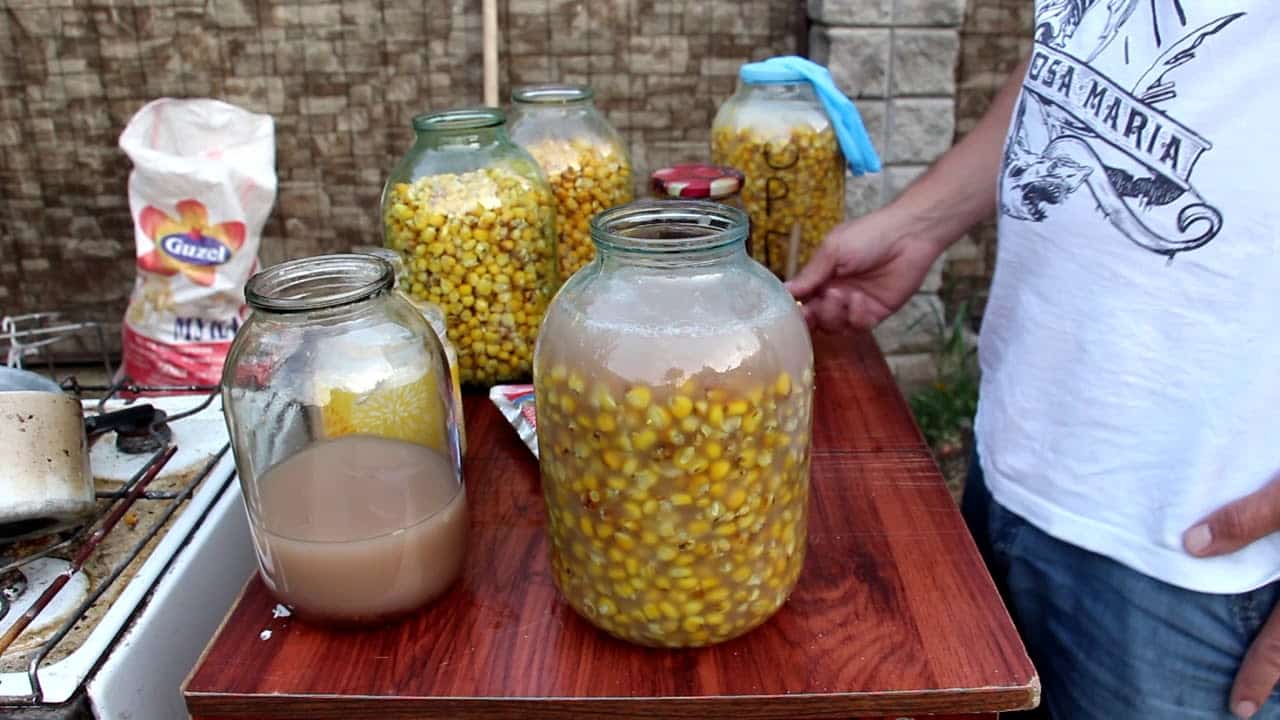Among natural lures for catching white fish, the caddis larva is distinguished by its incredible catchability. No wonder, because this is the natural diet of underwater inhabitants. The habitual taste and smell primarily attracts the fish and increases the chance of a great catch.
- Caddis flies: who is this, a description of what the larva looks like
- Where to find a caddis flask for a nozzle
- How to get caddis flies in summer and winter
- Advice from resourceful anglers – the first
- Caddis traps
- Traps for catching caddis flies in winter
- Fourth tip – fishing in winter
- How to preserve the larvae
- How to hook a shitik
- Who is caught on caddis flies
- How to catch and when
- Floating fishing
- “Tyrolka”
- Fishing with caddis flies with a float rod
- Поделиться ссылкой:
Caddis flies: who is this, a description of what the larva looks like
The detachment of flying arthropod insects, consisting of more than 50 thousand species, living in different parts of the world, is called caddis flies. In Russia, there are about 200 varieties of them. Adults are outwardly similar to small 6 – 20 mm inconspicuous moths. Their membranous wings are covered with hairs rather than scales. This is what distinguishes their imago from butterflies. The photo shows what an adult caddisfly looks like:
- Egg . After mating, females go under water to lay eggs. The place of masonry is solid bottom objects. The masonry has the appearance of a slimy lump, which contains from 300 to 800 pieces.

- Larva . Larvae appear after 3 weeks. These small creatures resemble articulated soft worms with a large dark head and 3 pairs of developed legs in the front of the body. They are active and voracious. They are fed by algae, but there are also predators among them. Their diet consists of small mosquito larvae and other plankton. True, these individuals are difficult to catch and are not used for fishing. To protect the vulnerable body, they sculpt a cover from all kinds of bottom debris. With the help of the finest filaments secreted by the modified salivary glands, the larva braids the body with light needles, grass blades, and slivers. To make the shell heavier, so as not to float, it uses grains of sand, fine gravel, shell rock.

- Doll . As it matures, the larva lines silk sticky threads inside the cap. Ready to pupate, it clogs the cocoon with a kind of membrane and stays there until the imago is fully formed, only without wings.

- Imago . After 14 – 21 days, matured inside the cocoon, the pupa has powerful jaws (mandibles), with which it gnaws at its exit from the shelter, crawls onto coastal solid objects (stones, sticks, logs).
The photo shows the metamorphosis of the pupa that crawled out of the cocoon into the “lionfish” of the caddis flies:



simultaneously, so there is no need to find partners for mating. During this period, over the coastal shores, flying individuals swarm in whole clouds, attracting large fish. After 14 days, most of the females will rush to lay new eggs.
Important! Caddis larvae live in both flowing and stagnant waters, only clean ones. The variety of their species in the reservoir indicates the state of pollution of the lake or river. They are an important part of the ecosystem of the reservoir and serve as food for most species of fish.
Where to find a caddis flask for a nozzle
Fishing for caddis flies takes place all year round. Especially successful fishing awaits fishermen in summer. They use caddis flies and adults as bait. This is the most accessible material for packing, if, of course, there is one in a given lake or river.

than a worm or other bait.
Interesting to know! It is better not to use additional
bait from porridge or cereals when fishing with caddis flies, especially during the current. Complementary feeding only distracts the fish. Several “houses” crushed and thrown into the water will perfectly attract her attention. After all, caddis flies are a delicacy for any fish.
In June, specimens hatched from pupae – “lionfish”, are found on objects of the coastal strip. Large dark green larvae are considered the best bait.



How to get caddis flies in summer and winter
In the summer, there are no special difficulties in collecting shitiks, however, they are perfectly camouflaged. They are collected in overgrown shallow waters. The larvae crawl right along the bottom, they are collected with a net.

Advice from resourceful anglers – the first
In the evening, build a “broom” of branches (coastal vegetation will do). Lower it gently into the water not far from the shore, so that the branches are not carried away, and they touch the bottom, load it down with a load. For catchiness, roll them in flour. In the morning, they quickly take a broom out of the water into a container and they are already collecting the catch in it.
It’s important to know! Caddis flies, firmly clinging to an object in water, as soon as it gets into the air, immediately unhooks and falls into the water.
Caddis traps
Take a spear with knots or a stick with stuffed nails and wind fresh seaweed on it. Leave it in water for a day. Shitiks will definitely fill the contents of the “trap”.
Traps for catching caddis flies in winter
The previous methods work in other seasons as well. In winter, holes are made and brooms are lowered there, better than conifers. Collect shitiks and put them back down. On the next visit, they take out branches, collect shitiks and lower them again. This is how the trap works all season.
Fourth tip – fishing in winter
Throw a net from potatoes with potato peels into the hole, waste there, preferably with rotten meat, load and lower it to the bottom of shallow water. It is also advised to lower the cow’s udder or other meat (tying it crosswise), pike head, hay with fish or bread. The main thing is that the caddis flies itself in the reservoir.
Interesting! In the old days, fishermen used a “clothespin” tackle. This is a pole with a modified clothespin at the end. In the cold season, larvae were collected with it so as not to freeze their hands.
How to preserve the larvae
There are many storage options for shitiks. You never cease to be amazed at the ingenuity of the anglers. Several ways to save caddis flies:
- Put the larvae in a jar of water . Punch a few holes in the lid. Place in the toilet cistern. When the water is drained, the caddisfly is washed and lives up to 1 month.

- Place shitiks in a wooden barrel, cover with a layer of wet duckweed . Cover with wet burlap. Store in a basement, periodically dampening vegetation. The entire winter season is maintained. Before fishing, clean the caddis flies in advance, put them in a bloodworm and sprinkle with starch.
- On fishing, the caddis flies are kept in running water in a leaky container . Thus, it is washed and cooled by the flow.
- In the refrigerator – in a large wide container without water, so that the larvae do not get crowded and do not harm themselves. Add pieces of lettuce leaves or fresh cabbage there. Stored up to 30 days.
- Laying out the “houses” in rows between the wetted foam pads helps to save shitik for 2 – 3 days.
- Freeze in the refrigerator . Spread out on polyethylene in even rows of larvae. Cover the top with a second layer of foil. Place gently in the freezer. Before going on a fishing trip, cut off the required number of shitiks, put them in a jar, put them in a pocket closer to the body. Before arrival, the caddis flies will thaw and will be ready for planting.
Many people keep shitiks just in a wet rag in the refrigerator, but the larvae come out of the “houses” and quickly die.
Important! The caddis larva lives when stored only in running water. In a jar of standing water, she suffocates. If it is necessary to add liquid to the larvae, do not use chlorinated water. Use melted snow in winter.

How to hook a shitik
They plant mainly a cleaned caddisfly larva. Its peculiarity is the fragility of the chitinous coating of the body. When released from the cocoon, it is easily crushed. The caddis flies are very shy and at the slightest danger retracts their head deeply into the cocoon. It is necessary to press with your fingers on the back of the “house”, then gently pull the shitik by the head.

Interesting! Some fishing enthusiasts use shitika as a flavoring for worms, dough or other bait.
Who is caught on caddis flies
Caddillon is a universal nozzle. It is adored by all types of white peaceful fish: roach, crucian carp, bream. The perch will not refuse to feast on. Riding fish: chub, asp, trout are preferred by adult butterflies.
How to catch and when
Caddis are caught in various ways and in different places: rivers, lakes, where shitiks are found. Anglers consider them to be an all-season bait. The fish takes the caddisfly especially actively in the spring from the beginning of May to the end of June, but at the same time, all summer, when even fish have enough plant food, they do not refuse the caddis flies. It happened when the casting of the spinning rod was idle, and the caddis spinner hook attachment worked flawlessly. In winter, the value of the bait increases significantly.
Floating fishing
A simple tackle consists of a rod (3 m), a transparent ball-shaped float, a meter lead, a sinker (pellet) and a hook. The transparent float ball does not frighten fish at shallow depths in clear water. It is intended for fishing for trout and grayling, but it is excellent for
roach ,
dace , silver bream, ide, perch.
“Tyrolka”
This is how fishermen affectionately call the tackle ”
Tyrolean stick “. It was invented for mountain rivers, where other fishing methods are not very effective, but on flat rivers with a shallow depth, fishing with it is successful.
Fishing with caddis flies with a float rod
This is the most common form of tackle for fishing with caddis flies. They fish with a fishing rod both on the river and on the lake. Manipulating with the components of the tackle, they fish for riding, bottom fish or those living in the water column. From the very beginning of spring and until the fish is fattened after spawning, this is the most popular tackle for fishing with caddis flies. The caddis larva, as well as its imago, work wonders both on the river and on the lake. Any white fish eats caddis with appetite, in any fishing season. With this bait, even a beginner will surely have a successful catch.




